Acoustic Instrument
Primers
What Kind of Guitar
Should I Start On?
What Kind of Banjo
Do I Want?
Evaluating and
Buying Used
Guitars
Setting Up
Fretted Instruments Whatever Happened
to the Banjo?
Beginning Five-
String Banjo
6-String Banjos
Banjo Pickups
What is a
Bluegrass Banjo?
What is a
Tenor Guitar?
Dean "Backwoods
Six" Shootout
Axes in my Life
Music Theory
Primers
Introduction
to Scales
Introduction
to Chords
Circle of Fifths
Other Articles
About Music
How to Give
Guitar Lessons
Musician or
Wannabe? Did God Really
Give Rock &
Roll to You?
Are You a
"Brand Bigot"?
Who Owns Folk Songs?
Historical Links
About the
National Road
The Story Behind
the Story - Real
People, Places,
and Events
About the Play
Play Home
What's New
Overview
About the
Music
About the
History
About the
Logistics
About the
Cast
Synopsis
About the
Set
About the
Author
Contact Us
Home




|
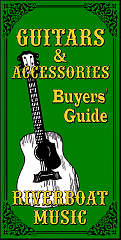
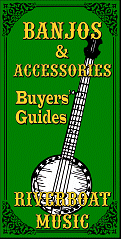
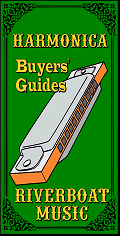
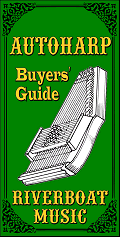
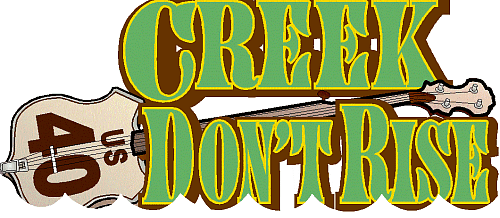
| Written by Paul Race for Creek Don't RiseTM |
What is a Radiused Fingerboard?
This refers to a fingerboard that is slightly curved, versus fingerboards that are completely flat, such as on classical guitars. Most mandolins and most 5-string banjos have flat fingerboards, but the necks are so narrow, you don't even notice. All members of the violin family have a very radiused fingerboard, because the strings have to be on different "planes" to bow them.Most steel-string guitars that cost over $100 have "radiused" fingerboards. So do nearly all electric guitars. That means that the fingerboard has a slight curve that helps the fingers stay in a more natural position while playing most chords. It also makes it easier to play barre chords.
Most six-string banjos also have radiused fingerboards. Not because some genius thought long and hard about it, but because most six-string banjos that list under $1000 were made by slapping a guitar neck on a banjo body. At the higher end, some six-string banjos, like the Deering Boston 6 and Deluxe 6, were designed deliberately with radiused necks.
I wrote this page because a guitar playing reader who had recently bought a 6-string banjo without a radiused neck was wondering why it was so hard to make an adjustment.
Now I confess that most of my radiused-fingerboard 6-string guitars have been harder to play than my guitars. But that's because I have professional guitars whose fretwork, etc., is a whole lot more precise than the $400-800 six-string banjos I've owned or tried. On the otherhand, my Deering Deluxe 6 plays just as smoothly as my most expensive guitars. True, the neck is longer than a standard guitar neck and some people have trouble adjusting for that reason, but I frequently play an Ovation Long-Neck, which is similar.
So having a radiused fingerboard won't necessarily let you do the same quality of fingerstyle work on a $400 six-string banjo that you are used to doing on your $3500 Martin. But it's still closer to what you're used to than a flat fingerboard. 
What Does "Radius" Mean in This Context?
Let's say, you draw a circle with a twelve-inch radius (24" diameter). Then you take one little piece out of that circle, about 1 3/4" long. Then you use that arc to define the neck profile. As you can imagine, the curve isn't huge, but it's there. If your original circle has a 16" radius (32" diameter), the curve would be even less noticeable.On most instruments, the curve is exaggerated on the outside edge of the fingerboard. The part they're measuring when they calculate radius is the part between the lowest string and the highest string. On most six-string banjos, that's about 1 11/16", similar to many steel-string acoustic guitars.

When is This a Consideration?
Because of the "guitar-neck-stuck-on-a-banjo-body" construction of most 6-string banjos, you won't generally encounter 6-string banjos with flat fingerboards. But there are a few.
The most popular "flat fingerboard" 6-string banjo on the market today is the Chinese-built Gretsch "Dixie 6." It's cute as a bunny and designed for guitar players who don't want to adjust their right-hand technique (closed-back, no tone ring, etc.). But if you're a fingerstyle guitarist used to high-end steel-string guitars, you'll discover that your left hand isn't as happy with the banjo as you would hope.
Another popular flat-fingerboard 6-string is Deering's made-in-USA Goodtime Solana. This banjo was also engineered to allow guitar players to switch over without creating the cacophony that comes from using several popular right-hand guitar techniques on a banjo. Part of that engineering includes designing the banjo for nylon strings, which are easier to play than steel strings on a banjo with a flat fingerboard. If you are a classical guitar player, this is the 6-string banjo for you, no question.
One other you may be tempted to buy because of its low cost is the Rogue 6-string banjo. They seem to have squeezed six strings onto a four-string neck, so you won't be doing a lot of fancy left-hand stuff anyway.
Other than those two banjos and a few limited runs and custom jobs, most of the six-string banjos made since, say 1970, will have a radiused fingerboard, so it's not an issue you will face often. But we thought you should know.
Radiused-Fingerboard 5-Strings?
Since most 5-string players only fret the first four strings most of the time, the neck is narrower, and the strings tend to be lighter, there isn't nearly as much call for radius-necked 5-strings. However, Deering has gotten enough requests that they have made a radiused neck standard on its Maple Blossom line. On a 1 5/8" fingerboard, most people wouldn't even notice. But it's there, in case you wondered. I wouldn't lose sleep over it one way or the other.Conclusion
As I implied earlier, most 6-string banjos come with a radiused neck, so this isn't an issue in most cases. However, if you're an experienced fingerstyle guitarist used to professional steel-string guitars, you'll probably want to avoid a flat fingerboard when you go to a six-string banjo. On the otherhand, if you're a classical guitar player, already used to a flat fingerboard, that might be the way to go. Whatever else you get out of our pages, I hope you come away with some great ideas for "sharing the joy."
Whatever else you get out of our pages, I hope you come away with some great ideas for "sharing the joy."
And please stay in touch!
All material, illustrations, and content of this web site is copyrighted ? 2001, 2002, 2003, 2004, 2005, 2006,
2007, 2008, 2009, 2010, 2011, 2012, 2013, 2014, 2015, 2016 by Paul D. Race. All rights reserved.
Creek Dont' Rise(tm) is a participant in the Amazon Services LLC Associates Program, an affiliate advertising
program designed to provide a means for sites to earn advertising fees by advertising and linking to Amazon.com.
Creek Don't Rise (tm) is Paul Race's name for his resources supporting the history and music of the North American Heartland.
For questions, comments, suggestions, trouble reports, etc. about this page or this site, please contact us.
| Visit related pages and affiliated sites: | |||||
| - Music - | |||||

|
 |
 |

|

|

|

|

|

|

|

|

|

|

|

|

|

|

|
| - Trains and Hobbies - | |||||
 |

|

|  |
 |

|
| - Christmas Memories and Collectibles - | |||||
 |

|
 |

|
 |

|
| - Family Activities and Crafts - | |||||
 |

|

|

|

|

|

